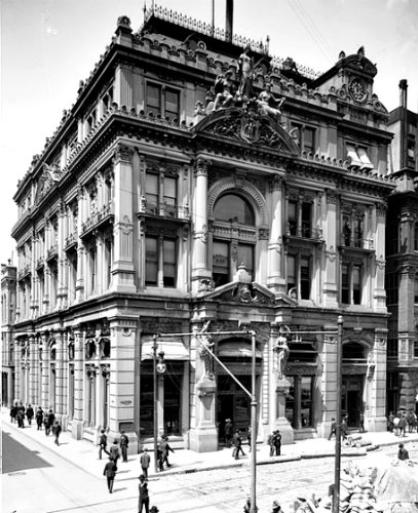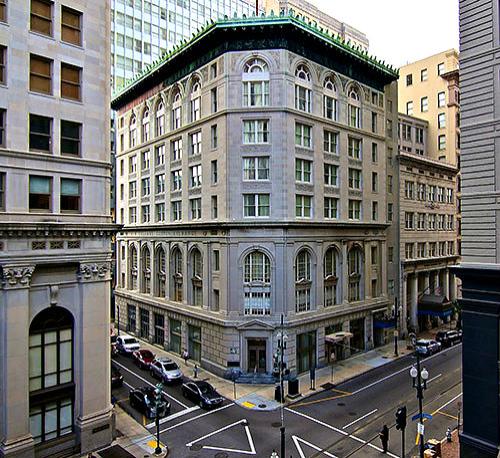
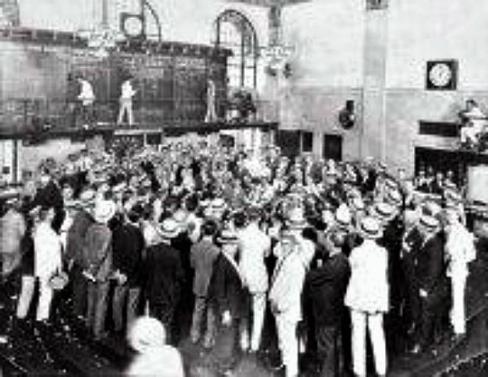
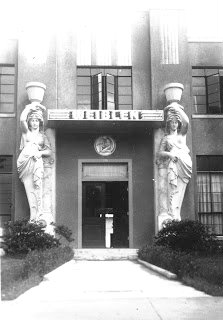
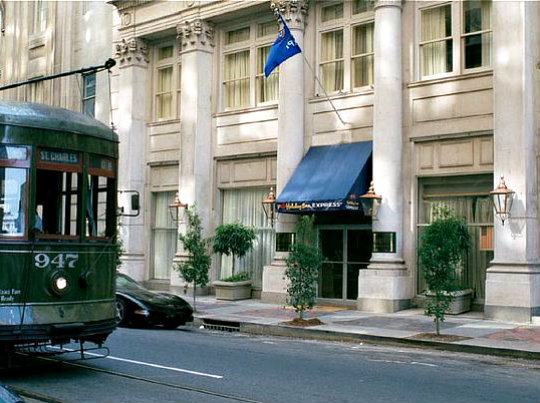
| The New Orleans Cotton Exchange was established in 1871 by a group of cotton factors, at a time when one third of the production of cotton in the U.S. was shipped through New Orleans. It was done in answer to the opening of the New York Cotton Exchange in 1870, New Orleans merchants being concerned that the New York Exchange would be more beneficial to buyers than sellers. It began in rented offices at the corner of Gravier and Carondelet Streets. The Exchange soon constructed its own building nearby, but quickly outgrew it. In 1883, on another corner of Gravier and Carondelet, the Cotton Exchange built a much larger and more extravagant building that would become known for its grand exterior and opulent interior; also, for its abundant scuptural embellishments, especially, the group of allegorical figures crowning the entrance (Agriculture, Commerce and Industry - though New Orleanians, for reasons lost to the ages, more often referred to Commerce as Peace). These somewhat controversial sculptures were the work of A. Goddard, a Chicago-based sculptor. In 1921, the landmark structure was demolished and a new, less palatial and more modern building took its place. The Cotton Exchange closed its doors in 1964. |
| Trading floor of the Cotton Exchange, 1920's |
| Weiblen Marble and Granite Works features two of the Cotton Exchange sculptures - but not Agriculture, Commerce or Industry. |
| While the old Cotton Exchange was being demolished, the building's famous carvings, including its crowning glories - Agriculture, Commerce and Industry - sat forlornly on the sidewalk amid the rubble. The sculptures were huge and no one could decide exactly what to do with them. Eventually, City Park was chosen as a temporary storage spot while their fate was decided. This took quite awhile. Finally, in the late 1930's, when work was about to begin on WPA City Park improvements, some of the sculptures were moved to Weiblen Marble and Granite Works on City Park Avenue. Two of these were added to that company's showroom exterior. Agriculture, Commerce and Industry didn't fare so well. Commerce (aka Peace) was sent to the quarry to be broken and used for slabs and vases. Agriculture and Industry were, also, destroyed, but, instead of vases, they were used as fill under the roads in Metairie Cemetery. A sad fall from very lofty heights. |
| The third Cotton Exchange building. This structure was placed on the National Register of Historic Places in 1977, and has been named a National Historic Landmark. The building underwent extensive renovation in 2006 and now houses a hotel. |
| The Cotton Exchange Hotel |
| The photo directly above is courtesy of Booked.net The link to this page is: http://old-new-orleans.com/NO_Cotton_Exchange.html Back to Old New Orleans Whispers - Home |
| -- Nancy |
